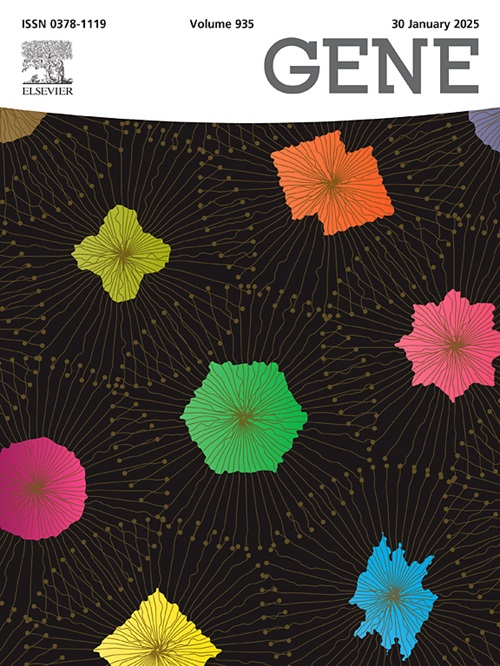Exploratory Genome-Wide association study of blood urea nitrogen levels in elite Chinese winter sports athletes
IF 2.4
3区 生物学
Q2 GENETICS & HEREDITY
引用次数: 0
Abstract
Background
Blood urea nitrogen (BUN) is a widely used biochemical marker of nitrogen metabolism and physiological status in athletes. While it is relevant to exercise physiology and training monitoring, the genetic basis of inter-individual variation in BUN levels remains unclear, particularly in elite athletic populations. This study aimed to explore potential genetic variants associated with BUN levels in elite Chinese winter sports athletes.
Methods and Results
A total of 482 athletes were recruited and classified as elite or non-elite. Blood samples were collected under standardized fasting and recovery-phase conditions. BUN levels were measured, and genome-wide genotyping and whole-genome sequencing were performed. After quality control and imputation, genome-wide association analysis (GWAS) was conducted using PLINK v1.9, adjusting for sex, sport, and population structure. No variants reached the conventional genome-wide significance threshold (P < 5 × 10-8). At an exploratory threshold (P < 1 × 10-5), 27 single nucleotide polymorphisms (SNPs) were identified, each explaining 3.33–9.28 % of the variance. Functional annotation using Ensembl VEP and GTEx indicated that most loci were located in non-coding regions, with several acting as expression or splicing quantitative trait loci (eQTLs/sQTLs) in skeletal muscle, thyroid, or blood. Pathway enrichment analysis via Reactome suggested involvement of inositol phosphate metabolism, collagen degradation, and IGF transport and uptake pathways.
Conclusions
This exploratory GWAS identified candidate genetic loci and pathways potentially related to BUN regulation in elite winter sports athletes. These findings provide preliminary insights into the molecular mechanisms underlying nitrogen metabolism in this population. Given the absence of genome-wide significance and replication, the results are hypothesis-generating and require confirmation in larger, independent, and more diverse cohorts.
中国优秀冬季运动运动员血尿素氮水平的探索性全基因组关联研究
血尿素氮(BUN)是一种广泛应用于运动员氮代谢和生理状态的生化指标。虽然它与运动生理学和训练监测有关,但BUN水平的个体间差异的遗传基础仍不清楚,特别是在精英运动人群中。本研究旨在探索与中国优秀冬季运动运动员BUN水平相关的潜在遗传变异。方法与结果共招募运动员482人,分为优秀运动员和非优秀运动员。在标准化禁食和恢复期条件下采集血样。测定BUN水平,并进行全基因组分型和全基因组测序。在质量控制和归算后,使用PLINK v1.9进行全基因组关联分析(GWAS),调整性别、运动和种群结构。没有变异达到常规的全基因组显著性阈值(P < 5 × 10-8)。在探索性阈值(P < 1 × 10-5)下,鉴定出27个单核苷酸多态性(snp),每个snp解释了3.33 - 9.28%的方差。使用Ensembl VEP和GTEx进行功能注释表明,大多数位点位于非编码区,其中一些位点在骨骼肌、甲状腺或血液中作为表达或剪接数量性状位点(eQTLs/sQTLs)。通过Reactome进行的途径富集分析表明,参与了肌醇磷酸代谢、胶原降解和IGF运输和摄取途径。结论探索性GWAS鉴定了优秀冬季运动运动员体内可能与BUN调控相关的候选基因位点和途径。这些发现为该人群氮代谢的分子机制提供了初步的见解。由于缺乏全基因组意义和可复制性,结果是假设产生的,需要在更大、独立和更多样化的队列中得到证实。
本文章由计算机程序翻译,如有差异,请以英文原文为准。
求助全文
约1分钟内获得全文
求助全文
来源期刊

Gene
生物-遗传学
CiteScore
6.10
自引率
2.90%
发文量
718
审稿时长
42 days
期刊介绍:
Gene publishes papers that focus on the regulation, expression, function and evolution of genes in all biological contexts, including all prokaryotic and eukaryotic organisms, as well as viruses.
 求助内容:
求助内容: 应助结果提醒方式:
应助结果提醒方式:


